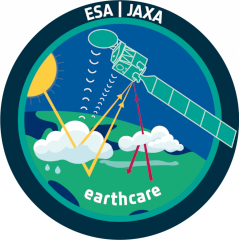
GIVE - German Initiative for the Validation of EarthCARE

Allgemeine Projektbeschreibung
Am 28. Mai 2024 gestartet, stellt der EarthCARE-Satellit der Europäischen Weltraumorganisation (ESA) und der japanischen Raumfahrtagentur (JAXA) einen Meilenstein in der weltraumgestützten Erdbeobachtung dar. Die Nutzlast von EarthCARE besteht aus zwei aktiven Instrumenten – dem Atmospheric LIDar (ATLID) und dem Cloud Profiling Radar (CPR) – sowie zwei passiven Instrumenten – dem MultiSpectral Imager (MSI) und dem Broad-Band Radiometer (BBR). Durch dieses spezielle Design und den synergetischen Ansatz, Produkte von zwei oder mehr Instrumenten zu kombinieren, sind erstmals komplexe globale Messungen von atmosphärischen Aerosolen, Wolken und Strahlung möglich. Dieses neue Wissen wird wesentlich dazu beitragen, die großen Unsicherheiten im Zusammenhang mit Aerosolen, Wolken und Aerosol-Wolken-Wechselwirkungen in Klimamodellen zu verringern. Um die hohe Qualität der EarthCARE-Messungen und -Datensätze sicherzustellen, sind umfassende Kalibrierungs- und Validierungsmaßnahmen für die einzelnen Instrumente sowie für die synergetischen Produkte erforderlich.
Zu diesem Zweck wurde die Deutsche Initiative zur Validierung von EarthCARE (GIVE) gegründet. Das Projekt läuft von Januar 2024 bis Dezember 2026 und vereint mehrere deutsche Forschungseinrichtungen: das Leibniz-Institut für Troposphärenforschung (TROPOS), die Freie Universität Berlin (FUB), die Universität zu Köln (UzK), den Deutschen Wetterdienst (DWD), das Forschungszentrum Jülich (FZJ), die Universität Hamburg (UHH) sowie die Ludwig-Maximilians-Universität München (LMU). Mithilfe bodengebundener, flugzeug- und satellitengestützter Beobachtungen werden Referenzmessungen gesammelt und zur Validierung der EarthCARE-Daten verwendet.
Beitrag von TROPOS
Im Rahmen von GIVE ist TROPOS für die Koordination der Validierungsaktivitäten sowie für die Validierung der Instrumente ATLID, MSI und der synergetischen ATLID-MSI-Produkte verantwortlich. Die Validierung der MSI-Wolkenprodukte basiert auf Daten des Spinning Enhanced Visible and Infrared Imager (SEVIRI) und des Flexible Combined Imager (FCI) der geostationären Satelliten Meteosat Second Generation (MSG) bzw. Meteosat Third Generation (MTG). Als Referenz für die ATLID-Produkte dienen bodengebundene Lidar-Messungen von festen und mobilen Stationen des PollyNET, z. B. in Mindelo (Kap Verde), Leipzig (Deutschland), Melpitz (Deutschland), Duschanbe (Tadschikistan) oder der mobilen Station LACROS. An voll ausgestatteten Supersites wie Mindelo oder LACROS ist auch die Validierung synergetischer Produkte aus zwei oder mehr Sensoren möglich.
TROPOS stellt außerdem die Bereitstellung von nahezu in Echtzeit verfügbaren Lidar- und Sonnenphotometerdaten der PollyNET-Stationen an das ESA Atmospheric Validation Data Centre (EVDC) über ACTRIS sicher. Darüber hinaus war TROPOS mit dem Standort Mindelo aktiv an der CLoud and Aerosol Remote sensing for EarThcare (CLARINET)-Subkampagne der Organized Convection and EarthCARE Studies over the Tropical Atlantic (ORCESTRA) beteiligt, die im Sommer 2024 rund um Kap Verde stattfand.
Informationen zum Projekt
Dieses Projekt wird vom Bundesministerium für Wirtschaft und Klimaschutz über den DLR Projektträger unter dem Förderkennzeichen: 50EE2403A gefördert.
